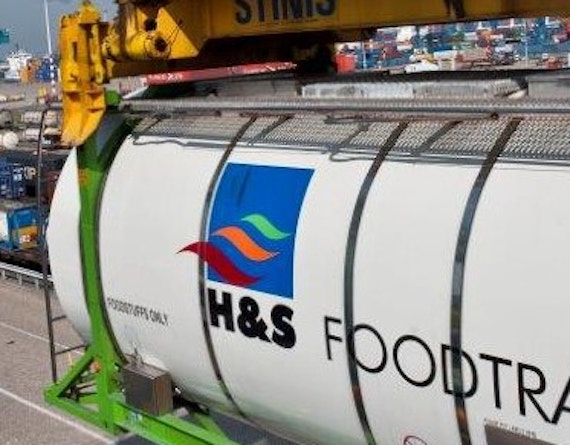
Transport
H&S transport, our asset-based business unit, transports liquid foodstuff and animal feed through its pan-European network. We offer sustainable and CO2-neutral transport solutions. We offer intermodal and modal transport, both nationally and internationally.
We have an extensive fleet of tank containers and tank trailers at our disposal for all kinds of liquid foodstuff. In addition, our tank container pool consists of a dedicated fleet for the liquid feed market. We have all the necessary certifications to comply with food safety procedures.
H&S Transport uses an elaborate intermodal network, which enables us, in combination with the latest state-of-the-art IT systems, to provide customers with tailor-made service and logistic solutions.
Do you have a question?
What is the difference between modal and intermodal transport?
When we refer to ‘modal transport’ this implies road transportation with a classic road barrel and truck. H&S owns its own fleet in modal transport. In modal transport, the product is transported directly from origin to destination by road.
When we refer to ‘intermodal transport’ then different modes of transport can be used: rail, water, road. The product is then transported in a tank container. The tank container can be stored and handled at a depot or terminal and transported by rail, water or road. H&S owns tank containers and functions as a logistic integrator between different modal suppliers to offer our customers intermodal solutions from origin to destination
Under what circumstances is intermodal transport favourable over modal transport?
Intermodal transport offers the customer a sustainable and cost efficient alternative to modal transport. In intermodal transport, tank containers from different customers are consolidated on train and water routes. This means that the costs for operating the train or ship are divided between all the customers on that route. Road transportation is then only used for the last mile(s) from the terminal to the destination.
The exact cost advantage of intermodal transport compared to modal transport will differ per case depending on the available operators on that route, the distance covered and the comparable fuel prices for modal transport. As a rule of thumb, transport distances larger than 600km have a cost saving potential in intermodal transport.
What suppliers does H&S work with to offer intermodal solutions?
The chain of events required to manage an intermodal operation is more than the transport alone. Tank containers also need to be stored, heated, cleaned and repaired. Accordingly, H&S works with terminals, depots, cleaning stations and garages throughout Europe. Every tank container is tracked and suppliers are audited to make sure that the customers requirements are met. In addition, H&S works with train operators, ferry operators and charters.
H&S has around 200 own drivers to move our own fleet. Optimising the utilisation of tank containers and then matching them to drivers and assets forms the daily challenge of H&S
What kind of additional logistics services can H&S transport offer?
H&S is eager to develop new logistic concepts to make the supply chain more efficient and flexible in order to benefit all parties involved. In the recent past we have actively been deploying swap-drop, buffer storage and pre-loading concepts.
In drop-swap concepts, the truck is decoupled from the trailer at loading or delivery location. The on-site operators are then responsible for managing the transportation unit during the loading/ delivery process. The driver is available to pick up a different trailer and drive to the following destination thereby optimising the process for both the production plant and load out as well as the carrier.
Buffer storage can be used to offer the customer additional flexibility. If the delivery location is managing a just-in-time production and/ or has a restricted amount of parking space, buffer storage at the nearest depot can offer a simple but effective solution. Instead of delivery location being faced with the arrival of tankers that have been pushed through the pipeline up to a week in advance, a buffer stock allows the delivery location to request them a day in advance, according to their production requirements. Buffer storage can be equipped with Glycol heating units which are easy to move around and assures a gradual heating process to safeguard product quality.
In pre-loading concepts, the registration, weighing and cleaning of arriving tankers is decoupled from the loading process. In this way we aim to reduce variability at the loading location. The loading location can then optimise their loadout based on their infrastructure. Pre-loading concepts can be combined with buffer storage and drop-swap concepts depending on the situation.
Who do I get in contact with for more information?
Please send an email to info@hs-group.eu or call +31 88 4267 777.
Our references

Roquette and H&S
Roquette and H&S Group Develop Smart Multimodal Logistics Solutions Across Europe

Heineken
Heineken was challenged to in their so called project “cut the tail”. This in order to increase the visibility through their supply chains by having less providers on professional level.
Full overview




